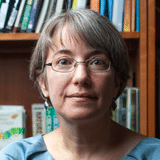This article is part of gb&d‘s Green Typologies series, Places of Worship: Contemporary Religious Design in America.
The 25th sura of the Qur’an refers to the servants of the Most Merciful as those who “walk upon the Earth in humility.” The proposal for the Green Mosque in Pewaukee, Wisconsin, reflects the essence of this passage—that the walk of the faithful is communed as much in his physical footstep as it is in his architectural footprint. The proposal is by Pasadena-based designers Onat Oktem, Ziya Imren, Zeynep Oktema, and Uri Tzarnotzky, and the building won the Stand-Alone Building category for the 2010 Faith in Place ‘Building: Problem or Solution?’ contest.
“The religious buildings we’ve built over the past 100 years tend to be solving 14th-century problems because that’s the architecture they’re responding to,” says Clare Butterfield, executive director for Faith in Place. “This competition was built around the idea of the problems we have now, which have to do with ecological limits as well as the changing face of religious communities. We asked what a building would look like that solves the problems we have now.”

Clare Butterfield is the executive director of Faith in Place, which sponsored the competition that gave rise to the Green Mosque Proposal, a winning entry. Photo: Samantha Simmons
Competition guidelines called for the proposals to be tied to a certain place—in this case, the north-central Midwest—and respond to the needs of that particular community. By locating the Green Mosque in the western suburbs of Milwaukee and providing services such as lecture halls, a library, and a soup kitchen, the Green Mosque functions as a community centerpiece rather than a building with an insular function.
The plans also detail a double-hull system in the building, creating a thermal buffer zone to facilitate heating and cooling functions while also promoting calm in the mosque interior. Respondent to the diverse precipitation of the humid continental climate, the mosque includes solar thermal wells and green roofing to capture water and reduce heat island effects.
The Islamic process of Wudhu ablution, which requires adherents to wash their hands, arms, face, and feet prior to prayer, further necessitates the careful treatment of water. Rain and wastewater from the process is purified and reused for watering the on-site vegetable garden, which cultivates corn, onions, and potatoes for the soup kitchen.
Low-flow plumbing, low-E finishes, and recycled materials are also used in the project, effectively lowering building energy use while promoting reliance on the local economy for construction.
“Islam is particularly steeped in its traditions, and this mosque challenges these ideas by incorporating new building techniques, rather than simply referring to the Islamic architectural traditions,” Butterfield says. “It’s a very peaceful and meditative place but incorporates a lot of references to modern technologies and energy-efficient design.”
Historically, Islam integrates sustainability into its design and iconography, but projects such as the Green Mosque seek to bring this effect beyond mere aesthetics and into the very mechanics of the religion. Although the proposed mosque won the 2010 competition just for the building plans and renderings, Faith in Place also remains active in promoting these green initiatives across religious movements. It has been an integral partner in everything from making the first solar Islamic center in America in 2008 at a mosque in Bridgeview, Illinois, to being involved in the greening of the LEED Platinum Jewish Reconstructionist Congregation Synagogue in Evanston, Illinois.
This article is part of gb&d‘s Green Typologies series, which in each issue explores a single type of building. For more of our most recent collection, Places of Worship: Contemporary Religious Design in America, choose from the list below.
• Prayer Pavilion of Light, DeBartolo Architects
• Cathedral of Christ the Light, Skidmore, Owings & Merrill
• St. Nicholas Eastern Orthodox Church, Marlon Blackwell Architect
• Westchester Reform Temple, Rogers Marvel Architects

